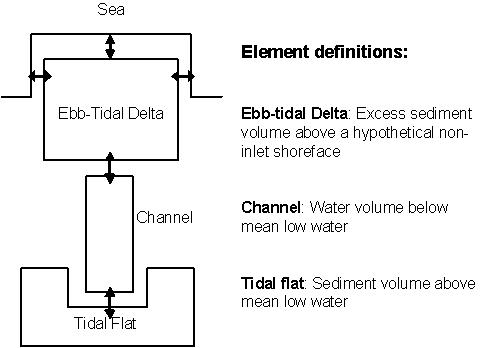Case study: Applying ASMITA to UK estuaries
Introduction
Over 170 estuaries with a variety of physical characteristics, spatial extents and management issues dissect the coastline of the United Kingdom1. Many have some form of nature protection designation and intertidal areas are particularly important for numerous species, including migrating birds. Intertidal areas provide important natural coastal defences, protecting the low lying land surround estuaries from flooding. Estuaries may also be used for recreational activities such as sailing, fishing and walking and are economically important as ports, fishing grounds and for aggregate extraction2. The diverse uses and morphologies of estuaries can lead to complex and sometimes conflicting management demands. In order to manage estuaries effectively it is important to be able to predict how they are likely to change in the future, both to natural and anthropogenic forcing. This poster looks at historical morphological development of four UK estuaries and uses a model (ASMITA) to predict the maximum rate of sea-level rise each estuary can undergo before intertidal areas are lost completely.
Issues
Sea-level rise
Sea-level rise is predicted to accelerate over the 21st Century, with a global-mean rise of 9 to 88 cm, with the largest relative sea-level rise in the UK in the south3. As sea-level rises, estuaries will need to import sediment to maintain there current morphologies. If insufficient sediment is available to keep pace with sea-level rise major changes in the morphology of the estuary may occur, including loss of intertidal areas, erosion of shorelines, flooding of low lying areas around estuaries. These changes will have consequences for the natural and economic functions of estuaries.
Estuary Management
Historically, many estuaries have been heavily modified by man. Modification include land reclamation for agriculture and development and dredging for shipping channels and aggregate extraction. Dredging continues today in many estuaries. In the future, estuary management is likely to change, with increased use of managed realignment to create habitat and natural flood defences. Changes in management may also influence the morphological behaviour of estuaries.
The Model
ASMITA (Aggregated Scale Morphological Interaction between Inlets and Adjacent coast, Stive et al,1998) represents the estuary as a series of morphological elements (Fig.2). Each element evolves towards an empirically derived equilibrium volume and interacts with adjacent elements by sediment exchange. ASMITA was calibrated to reproduce historic estuary evolution for four UK estuaries. Calibrated models were used to predict the maximum rate of sea-level rise (SLRCRIT) each estuary can undergo before intertidal areas are lost.
